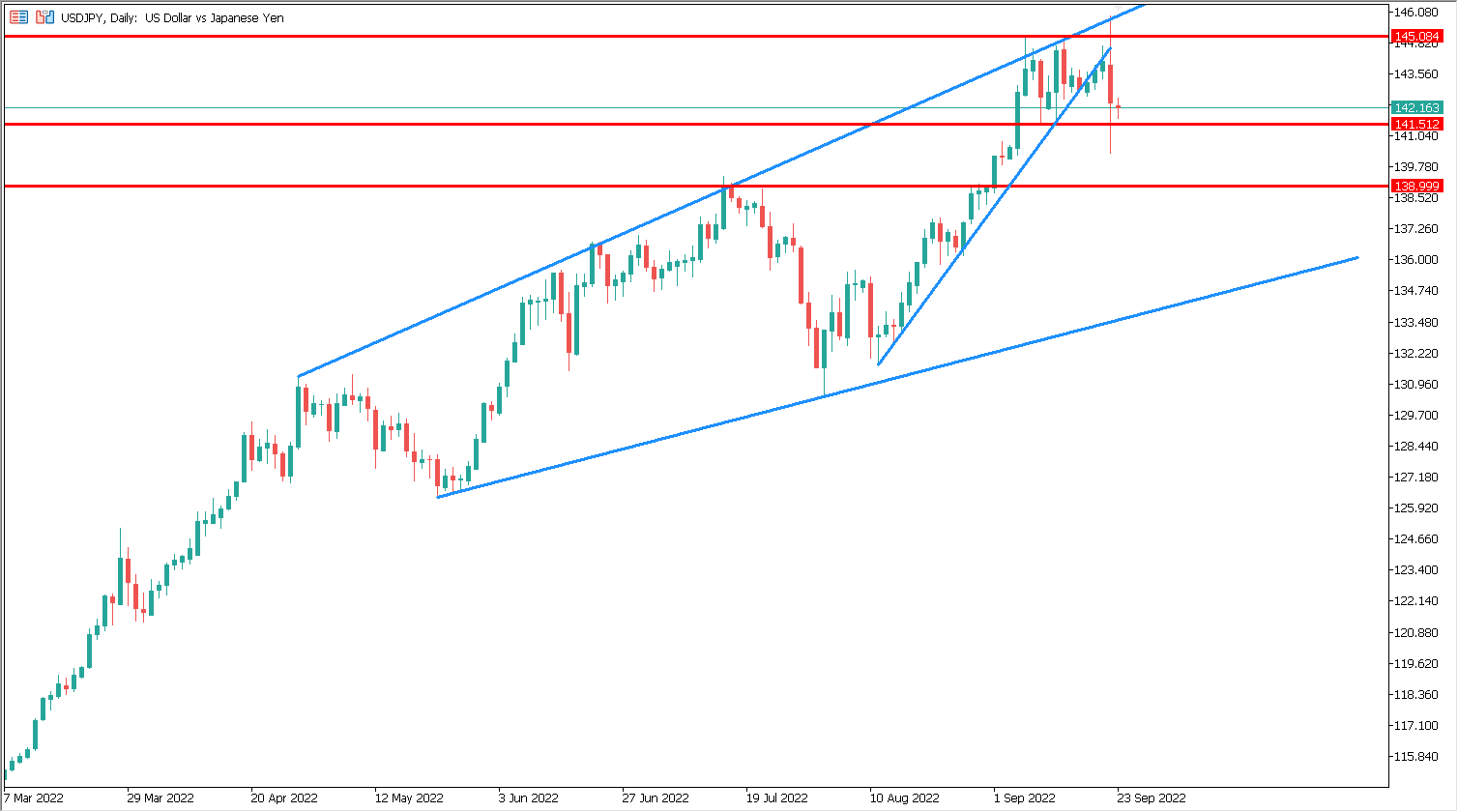The Japanese government has decided to intervene with currency intervention in the Japanese yen market after the USD/JPY exchange rate approached the 146.00 level following an earlier Fed decision. The Japanese currency had been losing steadily since the beginning of the year with the divergence in the actions of the US and Japanese central banks.
The Japanese government and the Bank of Japan (BoJ) intervened on Thursday in the foreign exchange market for the first time since 1998, when the U.S. dollar reached a 24-year peak against the yen. Japanese Deputy Finance Minister for International Affairs Masato Kanda confirmed that the government responded by selling dollars against yen. Kanda added that "markets are making very volatile moves" and that Japan "cannot tolerate excessive volatility and disorderly currency movements." Earlier in the day, the BoJ decided to leave its interest rate unchanged and continue its loose monetary policy, BBN reported.

Source: Conotoxia MT5, USD/JPY, H1
How lasting could the effects of intervention on the JPY be?
For the time being, investors may be wondering how lasting the effects of Japan's, for the time being, one-time intervention in the currency market may be. The drop from around JPY 146.00 to JPY 140.50 may undoubtedly be impressive, but will it be able to halt USD appreciation, which may be driven by growing expectations of rate hikes in the US?
According to analysts quoted by Bloomberg, the Japanese yen could rebound to 130-135 per dollar if the authorities push ahead with more interventions in the foreign exchange market. The scale of intervention was still small relative to total foreign exchange reserves, so there is still some ammunition to defend the currency." - Saktiandi Supaat, regional head of foreign exchange market research, told Bloomberg TV. He notes that USD/JPY could head toward JPY130 or JPY135 if authorities push harder for further intervention. However, the baseline scenario assumes support for the dollar through the end of the year and perhaps into the first quarter of 2023. The dollar could weaken in the event of any signs of a Fed slowdown or positive developments around Russia/Ukraine, which could lead to a reduction in risk-off sentiment, the Bloomberg interview added.
USD/JPY technical situation
From the point of view of the USD/JPY exchange rate chart, we can see that the quotes are still inside a potential expanding wedge formation. In addition, the potential resistance level and the contractual limit for currency interventions at JPY 145.00 may also have been defended. The short-term line drawn after the lows was also broken.
As a result, the rate could start consolidating in the range of JPY 145.00 to 141.50. Further potential support could fall in the area of previous peaks at JPY 139.00, and then at the lower boundary in the wedge.

Source: Conotoxia MT5, USD/JPY, D1
Daniel Kostecki, Director of the Polish branch of Conotoxia Ltd. (Conotoxia investment service)
Materials, analysis and opinions contained, referenced or provided herein are intended solely for informational and educational purposes. Personal opinion of the author does not represent and should not be constructed as a statement or an investment advice made by Conotoxia Ltd. All indiscriminate reliance on illustrative or informational materials may lead to losses. Past performance is not a reliable indicator of future results.


